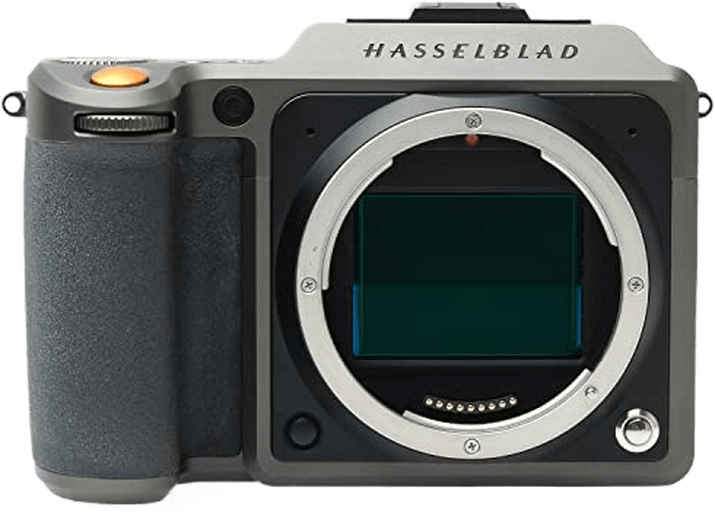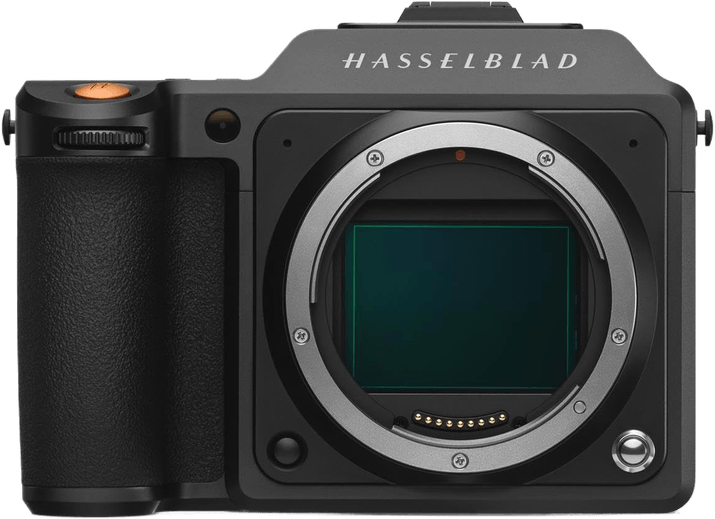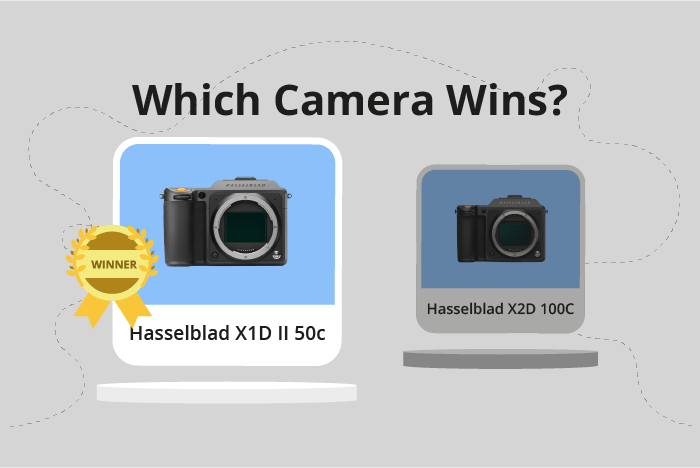Hasselblad X1D II 50c vs Hasselblad X2D 100C Comparison
Hasselblad X1D II 50c

Hasselblad X2D 100C

The Hasselblad X1D II 50c takes the lead with a score of 72/100, while the X2D 100C trails closely behind at 70/100. Both cameras share some common specifications, such as being medium format and mirrorless, and having similar sizes and launch prices. However, there are key differences that set them apart.
The X1D II 50c has a lighter weight of 766g compared to the X2D 100C’s 895g, making it more portable and easier to handle. Additionally, it has a slightly lower launch price of $5,750, making it more affordable for consumers.
On the other hand, the X2D 100C, released in 2022, is a newer model with potentially more advanced features and improved performance. However, this comes at a higher launch price of $8,199.
Both cameras have their strengths and weaknesses, but the X1D II 50c’s lighter weight and lower price give it a slight edge over the X2D 100C. Ultimately, the choice between these two cameras will depend on the user’s preferences and budget.
Hasselblad X1D II 50c vs Hasselblad X2D 100C Overview and Optics
The Hasselblad X2D 100C outperforms the Hasselblad X1D II 50c in terms of optics, scoring 74/100 compared to the X1D II 50c’s score of 68/100. Both cameras share common specifications, including a CMOS sensor, an unspecified processor, a DXOMARK score of 72 for the sensor, medium format sensor size, and the Hasselblad X lens mount.
The X2D 100C’s higher score results from its superior features, such as a 100-megapixel resolution, compared to the X1D II 50c’s 50 megapixels. This difference allows the X2D 100C to capture more detail and produce higher quality images. Additionally, the X2D 100C boasts a faster shooting speed of 3.3 frames per second (fps), compared to the X1D II 50c’s 2.7 fps. This faster shooting speed enables photographers to capture more images in a shorter amount of time, making the X2D 100C more suitable for action and sports photography. Furthermore, the X2D 100C features image stabilization, providing sharper images and reducing the effects of camera shake.
On the other hand, the X1D II 50c has its own advantages. Its lower resolution makes the camera more affordable and accessible to a broader range of photographers. Additionally, the X1D II 50c is still a high-quality camera with a medium format sensor that produces excellent image quality. However, these advantages do not outweigh the superior specifications of the X2D 100C.
In comparing the optics of the Hasselblad X1D II 50c and X2D 100C, it is clear that the X2D 100C offers better performance with its higher resolution, faster shooting speed, and image stabilization. While the X1D II 50c remains a quality camera, the X2D 100C is the superior choice for those seeking the best in optics.
Hasselblad X1D II 50c vs Hasselblad X2D 100C Video Performance
When comparing the video capabilities of the Hasselblad X1D II 50c and the Hasselblad X2D 100C, it is important to note that the X2D 100C does not have any video functionality. This means that if video recording is a priority for your photography needs, the X1D II 50c is the only option between these two cameras.
The Hasselblad X1D II 50c has a video score of 50 out of 100. This camera can record videos with a maximum resolution of 2.7K and dimensions of 2720 x 1530 pixels. The maximum video frame rate for this camera is 30 frames per second. However, the X1D II 50c does not have built-in time-lapse functionality.
Taking into account the video capabilities of both cameras, the Hasselblad X1D II 50c is the only choice if video recording is essential for your photography needs. The X2D 100C, lacking video functionality, is not suitable for those who require video recording features. Therefore, the choice between these two cameras depends on the specific requirements of the user.
Hasselblad X1D II 50c vs Hasselblad X2D 100C Features and Benefits
The Hasselblad X1D II 50c comes out on top with a feature score of 87/100, while the Hasselblad X2D 100C scores 61/100. Both cameras share several specifications, including a 3.6-inch screen size, 2,360,000-dot screen resolution, GPS, and WiFi capabilities.
The X1D II 50c outperforms the X2D 100C with its touchscreen and Bluetooth features. The touchscreen enables users to navigate menus and change settings more efficiently. Bluetooth connectivity allows for seamless transfer of images and remote control of the camera, providing enhanced usability and convenience.
On the other hand, the X2D 100C has a flip screen, which the X1D II 50c lacks. This feature allows for more versatile shooting angles and better framing in challenging situations. However, the absence of a touchscreen and Bluetooth on the X2D 100C makes it less user-friendly compared to the X1D II 50c.
In terms of features, the Hasselblad X1D II 50c is the superior camera due to its higher score, touchscreen, and Bluetooth capabilities. These features contribute to a more convenient and efficient user experience. The X2D 100C, with its flip screen, offers some advantages in shooting versatility but falls short in overall features. Users should consider their specific needs and preferences when choosing between these two cameras.
Hasselblad X1D II 50c vs Hasselblad X2D 100C Storage and Battery
The Hasselblad X2D 100C outperforms the X1D II 50c in storage and battery with a score of 71/100, compared to the X1D II 50c’s score of 49/100. Both cameras have two memory card slots but differ in the types of memory cards accepted. The X1D II 50c takes SD, SDHC, and SDXC cards, while the X2D 100C uses CFexpress Type B cards.
The X2D 100C’s superiority lies in its longer battery life of 420 shots and USB-C PD battery type. Additionally, it offers USB charging, a feature not available in the X1D II 50c. The X1D II 50c has a lower battery life of 300 shots and uses a 3400 mAh li-ion battery type.
There are no specific areas in which the X1D II 50c outshines the X2D 100C in terms of storage and battery. Therefore, the Hasselblad X2D 100C is the better choice for photographers who prioritize longer battery life and the convenience of USB charging.
Hasselblad X1D II 50c vs Hasselblad X2D 100C – Our Verdict
Are you still undecided about which camera is right for you? Have a look at these popular comparisons that feature the Hasselblad X1D II 50c or the Hasselblad X2D 100C:

